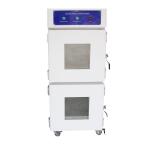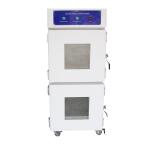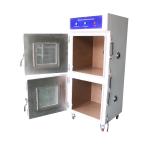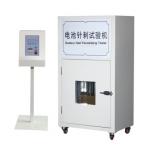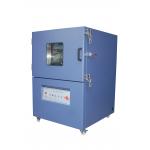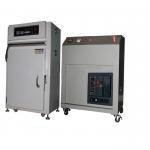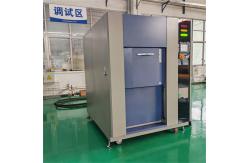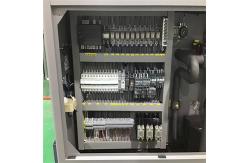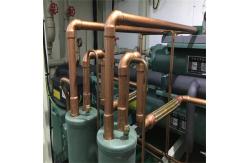In the era of rapid technological advancements, lithium-ion
batteries have become ubiquitous, powering a wide range of portable
electronic devices, electric vehicles, and energy storage systems.
However, ensuring the safety and reliability of these batteries is
of paramount importance. The customized temperature humidity
climate chamber, specifically designed to conduct the UN 38.3 Test
for batteries, plays a crucial role in evaluating the performance
and stability of batteries under various environmental conditions. This highly specialized climate chamber is dedicated to replicating
the specific temperature and humidity conditions required for the
UN 38.3 Test, which is a mandatory safety test for lithium-ion and
lithium-metal batteries during transportation. It serves battery
manufacturers, testing laboratories, and regulatory compliance
agencies. The primary objective is to subject batteries to a series
of temperature and humidity cycles, along with other mechanical and
electrical tests, to determine their ability to withstand the
rigors of transportation without posing a safety hazard. By
accurately simulating the environmental stresses that batteries may
encounter during shipping and handling, the chamber helps identify
potential weaknesses, such as thermal runaway, leakage, or
explosion, and ensures that only safe and reliable batteries enter
the market. - Robust and Insulated Chamber Structure
- The climate chamber is constructed with a heavy-duty steel frame
that provides exceptional rigidity and stability. The frame is
coated with a corrosion-resistant finish to enhance its durability.
The chamber walls are made of high-quality insulation materials,
which minimize heat transfer and maintain precise temperature and
humidity levels. The insulation is carefully engineered to
withstand the rigors of continuous testing and prevent any external
factors from interfering with the internal test environment. The
chamber is also equipped with a hermetic door seal, ensuring a
leak-free enclosure and consistent test conditions.
- Precision Temperature and Humidity Control System
- The chamber features a highly accurate temperature and humidity
control system. It can maintain a wide temperature range, from
-40°C to +180°C, with an accuracy of ±0.5°C. The humidity control
range extends from 10% to 98% relative humidity, with an accuracy
of ±2% RH. The system utilizes advanced refrigeration units,
electric heaters, humidifiers, and dehumidifiers to achieve and
maintain the desired environmental conditions. Temperature and
humidity sensors are strategically placed within the chamber to
provide real-time feedback, enabling the control system to make
rapid and precise adjustments.
- Customizable Test Profiles and Sequences
- The chamber is equipped with a user-friendly software interface
that allows for easy customization of test profiles and sequences.
Operators can precisely define the temperature and humidity levels,
dwell times, and cycling patterns according to the requirements of
the UN 38.3 Test. The software also enables the creation of complex
test scenarios, including the combination of temperature and
humidity changes with other tests, such as vibration or shock
tests. This flexibility ensures that the chamber can adapt to
different battery types and testing standards.
- Safety and Monitoring Systems
- To ensure the safety of operators and the integrity of the testing
process, the chamber is equipped with a comprehensive set of safety
and monitoring systems. It has emergency stop buttons strategically
located for immediate shutdown in case of any abnormal situation.
The chamber is also protected against over-temperature,
over-humidity, and over-pressure conditions, with built-in safety
circuits that automatically cut off power if necessary.
Additionally, the chamber is designed to detect and handle any
potential battery leaks or explosions. It is equipped with gas
sensors to monitor the concentration of hazardous gases, and a
ventilation system to ensure the removal of any potentially harmful
fumes. The monitoring system also records all relevant test data,
including temperature and humidity profiles, battery voltage and
current, and any safety-related events, providing a detailed
history of the test for analysis and reporting.
- Data Logging and Analysis Capabilities
- The chamber is equipped with a sophisticated data logging system
that records all test parameters and battery performance data. The
logged data can be stored in a built-in memory or exported to
external storage devices for further analysis. The software
provides tools for generating detailed test reports, including
graphs and statistical analysis of the data. This allows engineers
and regulatory authorities to easily assess the performance of the
batteries under test and make informed decisions about their
compliance with safety standards.
- Temperature Cycling Range and Rate
- The chamber can perform temperature cycling within the range of
-40°C to +18
|
